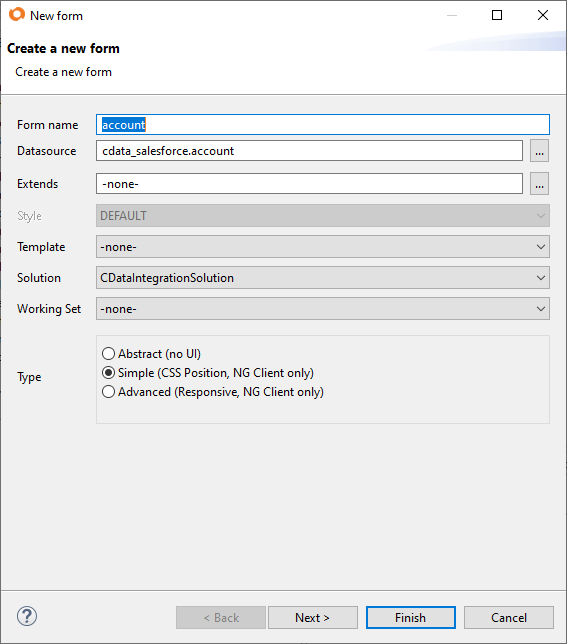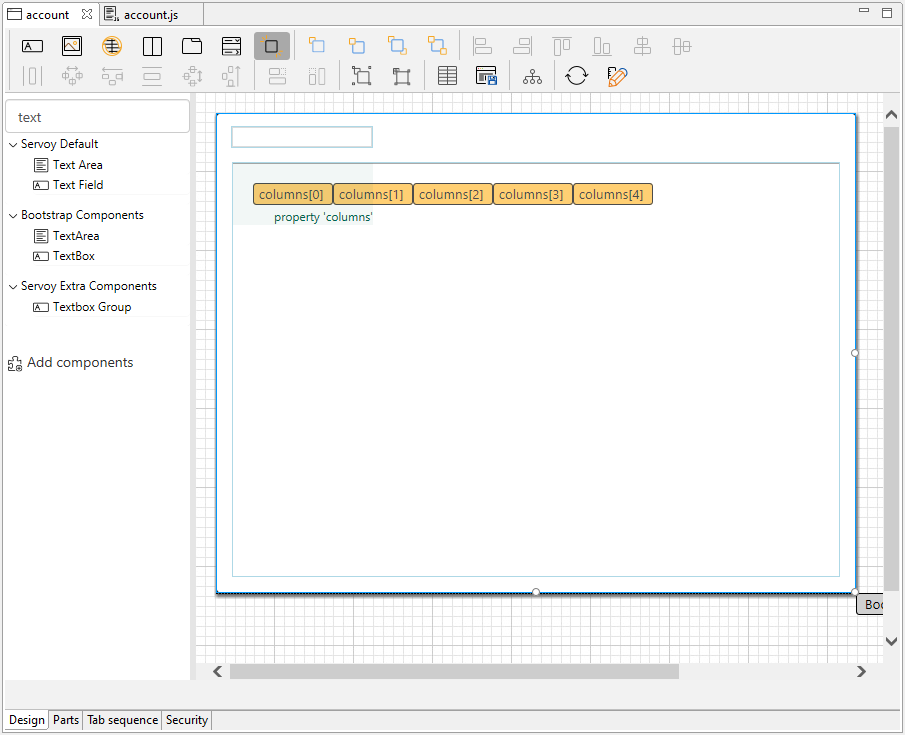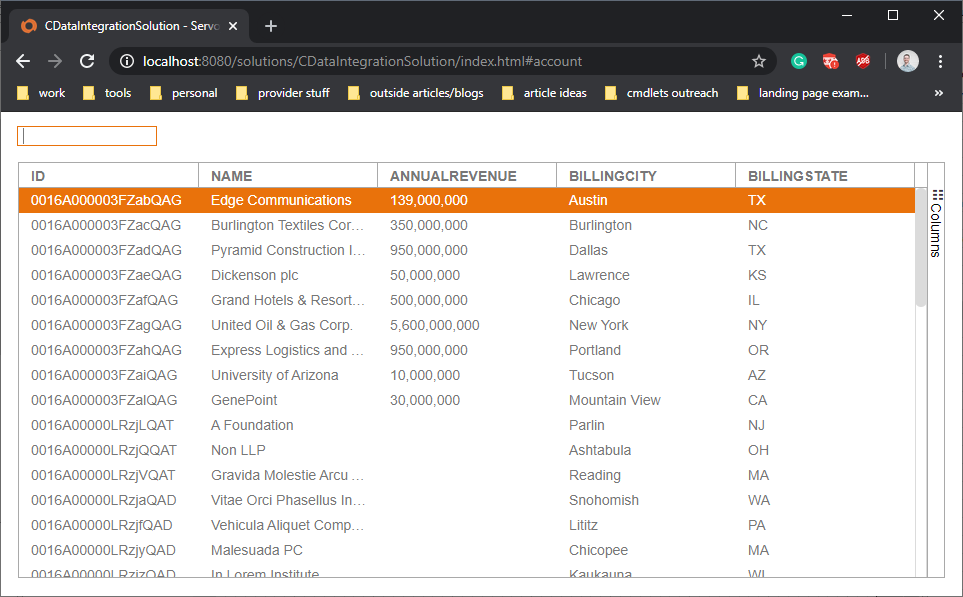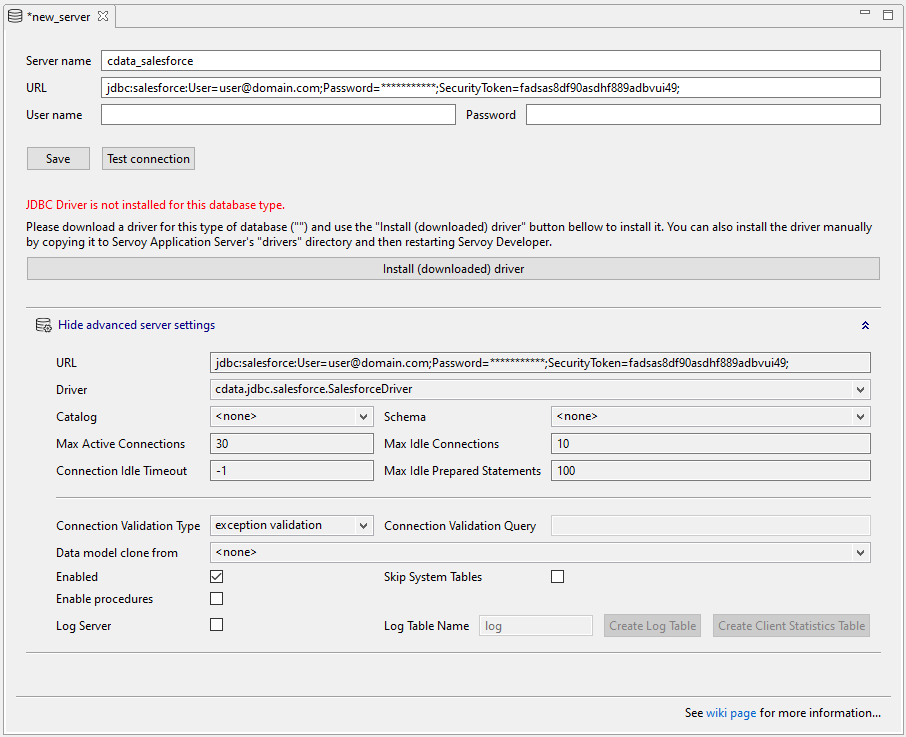Discover how a bimodal integration strategy can address the major data management challenges facing your organization today.
Get the Report →Build YouTube Analytics-Connected Web Apps in Servoy
Use Servoy Developer to easily connect to YouTube Analytics data and build web apps with connectivity to live YouTube Analytics data.
Servoy is a rapid application development and deployment platform. When paired with the CData JDBC Driver for YouTube Analytics, users can build YouTube Analytics-connected apps that work with live YouTube Analytics data. This article describes how to connect to YouTube Analytics from Servoy and build a simple web app to display and search YouTube Analytics data.
With built-in optimized data processing, the CData JDBC Driver offers unmatched performance for interacting with live YouTube Analytics data. When you issue complex SQL queries to YouTube Analytics, the driver pushes supported SQL operations, like filters and aggregations, directly to YouTube Analytics and utilizes the embedded SQL engine to process unsupported operations client-side (often SQL functions and JOIN operations). Its built-in dynamic metadata querying lets you work with YouTube Analytics data using native data types.
Connect to YouTube Analytics in Servoy Developer
To build YouTube Analytics-connected apps, you need to first create a data provider in Servoy Developer using the CData JDBC Driver for YouTube Analytics.
- Install the JDBC Driver.
- Copy the JDBC Driver JAR file. (cdata.jdbc.youtubeanalytics.jar) to the /application_server/drivers/ directory in the installation directory for Servoy.
- Open Servoy Developer.
- In the Solution Explorer, right-click Database Server (under Resources) and choose "Connect to existing database" -> "empty."
- Name the server.
- Click to show the advanced server settings.
Set the URL, for example: jdbc:youtubeanalytics:ContentOwnerId=MyContentOwnerId;ChannelId=MyChannelId;InitiateOAuth=GETANDREFRESH
Built-In Connection String Designer
For assistance in constructing the JDBC URL, use the connection string designer built into the YouTube Analytics JDBC Driver. Either double-click the JAR file or execute the jar file from the command-line.
java -jar cdata.jdbc.youtubeanalytics.jarFill in the connection properties and copy the connection string to the clipboard.
YouTube Analytics uses the OAuth authentication standard. You can use the embedded CData OAuth credentials or you can register an application with Google to obtain your own.
In addition to the OAuth values, to access YouTube Analytics data set ChannelId to the Id of a YouTube channel. You can obtain the channel Id in the advanced account settings for your channel. If not specified, the channel of the currently authenticated user will be used.
If you want to generate content owner reports, specify the ContentOwnerId property. This is the Id of the copyright holder for content in YouTube's rights management system. The content owner is the person or organization that claims videos and sets their monetization policy.
![Using the built-in connection string designer to generate a JDBC URL (Salesforce is shown.)]()
- Select the Driver class you just copied, for example, cdata.jdbc.youtubeanalytics.YouTubeAnalyticsDriver
![Connecting to data through the JDBC Driver (Salesforce is shown).]()
Build a YouTube Analytics-Connected Web App
Once you have configured the connection to YouTube Analytics in the Servoy Developer resources, you are ready to build apps with access to live YouTube Analytics data.
Create a New Solution
- In the Server Explorer, right-click "All solutions" and select "Create new solution."
- Name the solution.
- Select the checkbox to include the "search" module.
- Click "Finish."
Create a New Form
Right-click "Forms" and select "Create new form."
- Name the form.
- Select a Datasource.
- Set the type (e.g., Simple) and click "Finish."

Add a Data Grid to the Form
- Drag a Data Grid component (from Servoy NG-Grids) onto the form.
Drag a column component onto the Data Grid and set the "dataprovider" property for each column component to a column from the YouTube Analytics "table" (e.g., Snippet_Title from the Groups table).
Continue adding columns as desired.
Add Searching to the App
Note that the "svySearch" extension is required to add search functionality (included by default when you create a new solution). If you did not add the extension when you created the solution or you are modifying an existing solution, you can add the search module by right-clicking Modules (in the solution) and selecting "Add Module." Select "svySearch" and click "OK."
- Drag a Text Field component onto the Form.
- Right-click the Form and select "Open in Script Editor."
- Create a new variable (JavaScript) to hold the search value:
var searchText = '';
- Back on the Form, in the Text Field properties:
- Set the "dataprovider" property to the Form variable you just created.
- Double-click to add a method for the onAction event.
- Click to create the method in "Form," name the method (e.g., onEnter), and click "Create private."
- Click "OK & Show."
- Add the following JavaScript to the JavaScript file to use the Servoy framework to implement searching bound data based on the text in the Text Field:
var search = scopes.svySearch.createSimpleSearch(foundset).setSearchText(searchText); search.setSearchAllColumns(); search.loadRecords(foundset);

Save and Launch the App
Save the form and JavaScript file, then click Run -> Launch NGClient to start the web app.

Download a free, 30-day trial of the CData JDBC Driver for YouTube Analytics and start building YouTube Analytics-connected apps with Servoy. Reach out to our Support Team if you have any questions.








